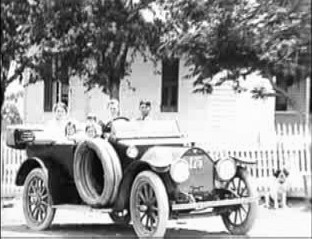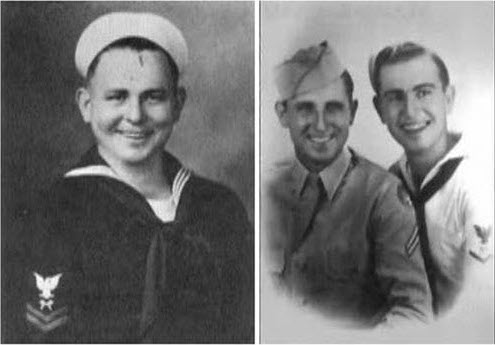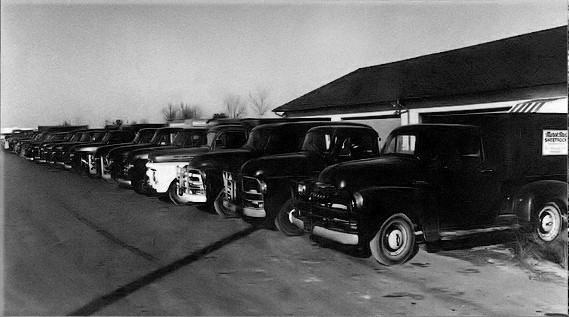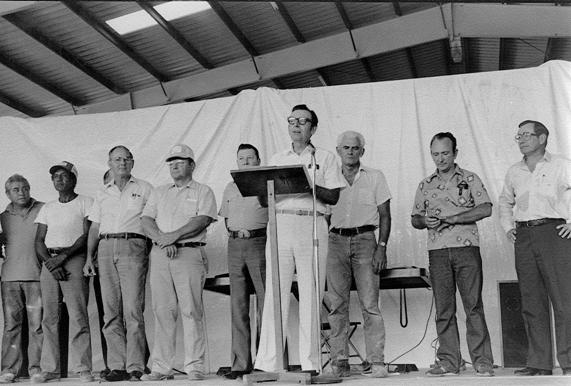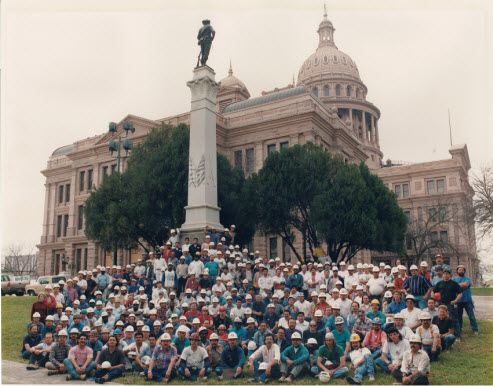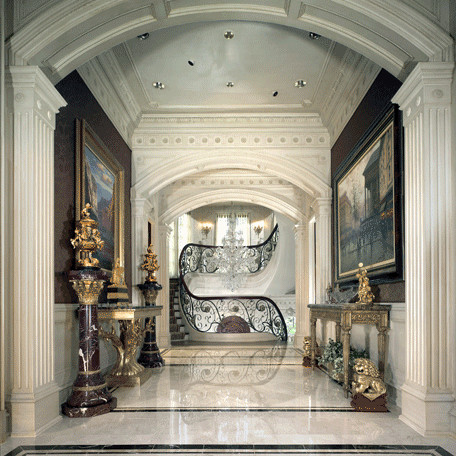MAREK founder John L. Marek, along with his brothers Bill and Ralph, grew up on a farm in Yoakum, Texas, during the 1920's. Having lived through the Great Depression, when their parents were forced to foreclose on their farm, the three Marek brothers were no strangers to hard times. In turn, they also grew up learning the value of hard work.
Over the quarter of a century the Marek Family of Companies has been in business, it has thrived during economic highs and persevered through the lows — consistently adapting to change and rising to the challenges to come out a stronger and more diverse company than before.
The Marek brothers' legacy of commitment to our core values, and of improving our firm and our industry, continues through today and into the future with the men and women that are MAREK.
1938
John L. Marek moves to Houston, Texas, at age 21 and takes a job as a sheetrock apprentice to drywall business owner Robert Cerni.
Marek leaves Cerni to work for himself installing sheetrock. He gains leads from sheetrock salesman and business associate John Macy. Read more about MAREK in the 1930s >>
1940
Bill Marek moves to Houston and joins John L. in the sheetrock installation business.
1941
At age 15, Ralph Marek also moves to Houston, joining his brothers in sheetrock installation and completing the trio.
Marek Brothers Sheetrock is founded.
The December 7 bombing of Pearl Harbor forces the United States to war.
The construction industry grinds to a halt and Marek Brother Sheetrock shuts down.
1945
After serving in the U.S. Navy, John L. returns to Houston to re-establish his sheetrock business.
1946
Bill, also a Navy veteran, joins his brother in Houston. He brings with him Cousin Bob Marek, who also joins the family business.
Houston residential construction booms and Marek Sheetrock business soars.
1945-1948
Texas leads nation in industrial plant construction.
1948
Ralph returns to Houston and, once again, completes the Marek brothers trio.
Houston breaks all previous construction records with an estimated total volume of $271,000,000 for all construction and ranks third in the nation for residential units built.
The Mareks work 12 to 14 hour days hanging drywall themselves alongside employees equally as dedicated to the trade, other Marek relatives recruited from the farms of Yoakum. Read more about MAREK in the 1940s >>
1952
Marek Sheetrock boasts more than 70 employees and is generally recognized as the industry leader in drywall installation.
Marek Sheetrock begins to build its reputation for paying employees slightly higher than industry rates and refusing to cut costs in favor of lower bids, instead emphasizing the value of quality work and great customer service.
Marek Sheetrock changes its business model to not only install but also supply the sheetrock, which they previously received from the contractor.
Marek Sheetrock adds quarter inch work, a relatively new procedure of installing ¼ inch drywall over shiplap in older homes to make them look more modern, to its services, which increases the skill level required of installers.
1956
Stanley Construction, a building construction company founded by the Marek brothers, increases the brothers' revenue and diversifies their service portfolio.
Marek Sheetrock becomes Marek Brothers Company. Read more about MAREK in the 1950s >>
1960
Marek cofounds a drywall contractors association in Houston.
1961
MAREK purchases Frank Sharp Lumber Yard to streamline lumber purchasing and storage.
Marek begins using an innovative new product known as Aristex, an inexpensive option that is easy to apply, reduces noise and hides minor flaws in drywall finish. This product eventually becomes a standard feature in Houston apartments.
At the behest of Bill Marek, Marek Brothers Company takes advantage of commercial construction spike and founds Commercial Drywall Incorporated (CDI).
CDI completes its first commercial project, office buildings in the Manned Space Center in Clear Lake, as a joint venture with Siptak Drywall.
1963
CDI completes the interior wall construction for the Windsor Theater, a first-of-its-kind Cinerama theater consisting of curved walls and ceilings. This project marks the beginning of the company's use of gypsum board and metal studs.
1966
MAREK implements a retirement/pension plan and a profit-sharing system in its efforts to increase employee retention.
1968
The entire suite of Marek companies is home to 115 employees.
1969
After graduating from Texas A&M, Stan Marek joins CDI as its first Marek family-member employee.
Employees of the Marek companies enjoy 15 — 20% in raises, well above the national average of 6%. Read more about MAREK in the 1960s >>
1970
Bruce Marek graduates from the University of Houston and becomes the second family member to join CDI.
1970-1979
CDI receives contract for Greenway Plaza drywall installation, a 12 year project involving demountable partitions fabricated on site with gypsum panels.
CDI expands its services to include a paint department and millwork company.
CDI projects begin to extend beyond Houston to cities including Austin, San Antonio and Dallas, prompting CDI to open branch offices in each city.
CDI enlists the industrial psychology department at the University of Houston to strategize ways to incentivize its primarily unionized and hourly employees. Crews are rewarded with barbeque luncheons for coming in under budget, instilling a sense of team effort and fostering improved productivity.
1976
Marek Brothers Company partners with Houston Community College to fund courses for its workers to earn their G.E.D. or gain proficiency in the English language.
Marek Brothers Company continues to flourish in residential real estate.
Stanley Construction develops several subdivisions including 160 lots in Walnut Springs, 60 lots in Fawnwood, 187 lots in Turtle Creek in Montgomery County, 158 lots in Atascocita, 150 lots in Live Oaks Estates, and 86 lots in Oakwood.
1979
Marek Brothers Company releases its first internal newsletter, the Commercial Craftsman, to better communicate with its growing number of employees. Read more about MAREK in the 1970s >>
1981-1982
Marek Brothers Company receives contract for the 64-story Transco Tower interior work.
1982
Construction work takes a hit as a result of the oil bust recession.
While Marek Brothers Company is forced to downsize, CDI continues to get jobs as management and the workers tighten their belts.
1987
CDI opens its Atlanta, Georgia office. Read more about MAREK in the 1980s >>
1990-1999
The economy recovers, reviving business for the Marek companies.
MAREK's services and projects continue to expand and include metal framework, hanging drywall, acoustical, painting, tiling and insulation in hospitals, office buildings of all sizes, schools, condominiums, churches, nursing homes, retail centers, theatres, sports domes, stadiums, hotels, homes and apartments. Read more about MAREK in the 1990s >>
2001
The terrorist attacks of September 11 have a negative impact on industries across the nation. Texas drilling drops 43%.
2002
Commercial real estate construction stalls as vacancy rates increase. Residential real estate, however, remains relatively stable.
2006
Texas experiences an increase in growth and a decrease in unemployment, marking its economic recovery.
2007-2008
The United States slips into a recession, quickly followed by the state of Texas. Residential real estate market slows.
2009
Texas commercial and real estate market worsens with contract values for retail, warehouse, and office projects falling 71% over the previous year. Read more about MAREK in the 2000s >>
2014
The national and Texas economies reach toward prerecession status. In Texas, both job growth and building permits increase from previous year.
2015
MAREK boasts branches across the southern United States and maintains its status as a leader in both commercial and residential construction services. Read more about MAREK today >>


